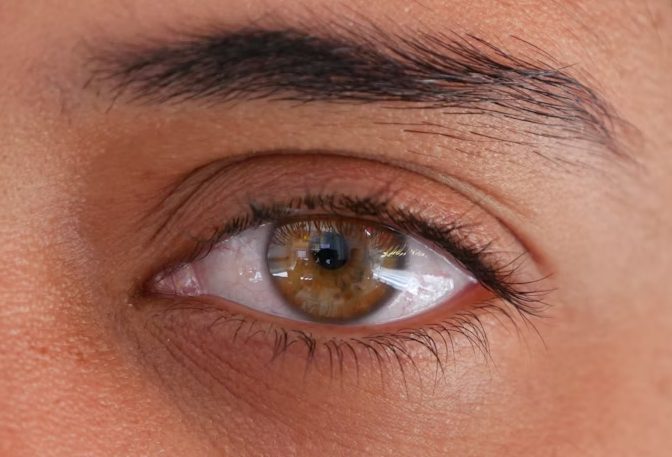
@ShahidNShah


Have you ever caught yourself squinting at droopy lids in the mirror and wondered whether the future holds something better than scalpels and stitches?
The good news is that the field of eyelid surgery, also called blepharoplasty, is no longer just about cutting. Rather, it is evolving these days.
Today, technology is reshaping the way surgeons approach this delicate area. Lasers, digital imaging, and even simulations are stepping in to make results more precise, recovery faster, and outcomes more natural. It’s what many are calling Eyelid Surgery 2.0.
Having said that, let’s take a closer look at how these innovations are transforming aesthetic care, especially for patients exploring options in places like the Bay Area.
A leap forward in eyelid surgery is the use of 3D imaging and simulation. Before a single incision is made, patients and surgeons can:
Imagine a simulation where your own facial structure is scanned, then a projected “after” image shows how your eyelids might look—skin tightness, fold position, contour changes. That’s no longer science fiction; many aesthetic practices now incorporate such tools into their consultations. The benefit? Reduced uncertainty, better alignment between patient and surgeon vision, and fewer surprises.
For those considering an eyelid lift in the Bay Area, clinics like Dr. James Anthony’s practice integrate this type of digital planning into their approach. By combining artistry with advanced technology, they ensure outcomes that feel natural and personalized.
Additionally, AI and predictive analytics are beginning to assist in identifying ideal incision lines or tension vectors based on large datasets. In broader aesthetic surgery trends, this kind of tech-backed personalization is central to what’s being called the “future of aesthetic care.
One hallmark of Eyelid Surgery 2.0 is the increasing use of advanced tools that improve accuracy, reduce trauma, and optimize recovery.
Take laser-assisted blepharoplasty, which uses fractional CO₂ or other laser systems to make very precise cuts, reduce bleeding, and minimize scarring. Rather than a scalpel, the laser’s energy allows surgeons to resect skin or adjust soft tissues while sealing tiny blood vessels as they go.
Another technology gaining ground is the PlasmaBlade — a device that uses radiofrequency energy combined with an insulated blade. It enables clean dissection with less bruising and swelling. Some surgeons combine these approaches with fractionated laser resurfacing to smooth fine lines around the lids during the same procedure.
These tools help modern eyelid surgery stand apart from older methods by offering gentler intervention, more predictable outcomes, and shorter recovery. As the technology improves, what once felt “surgical” begins to feel more akin to precision engineering of soft tissues.
While we’re not quite at fully autonomous eyelid surgery (that’s still science fiction), incremental assistive technologies are already making an impact. Robot-assisted tools can help:
These tools are especially promising for delicate zones like the eyelids, where millimeter-level precision can mean the difference between a clean lift and visible scars or asymmetry. As aesthetic surgery evolves, such robotic assistance may become a standard support tool in high-end surgical suites.
Another area to watch is regenerative and adjunctive technologies. For instance, combining eyelid lifts with laser resurfacing or adjunct therapies like platelet-rich plasma (PRP) can enhance healing, skin quality, and long-term results. Some approaches already merge resurfacing steps (for skin texture) with blepharoplasty in a single session.
With so many advancements, it’s vital that patients choose a surgeon who truly understands both aesthetic artistry and evolving technologies. Here are some considerations to keep in mind:
When you combine a motivated, informed patient with a surgeon who uses “2.0” techniques thoughtfully, the result is safer, more predictable, and more satisfying transformations.
The era of Eyelid Surgery 2.0 is here: it’s where artistry meets innovation. Through lasers, plasma tools, simulation, and robotic support, today’s eyelid lifts are gentler, smarter, and more precise than ever before. As aesthetic care continues evolving, these advancements will shape not only how we rejuvenate eyes—but how we redefine trust, predictability, and safety in cosmetic surgery.

Chief Editor - Medigy & HealthcareGuys.
From morning workouts to late-night city commutes, glasses and contacts can feel like constant obstacles. They fog, dry out, and require ongoing maintenance. That’s why so many people in New York City …
Posted Sep 30, 2025 Ophthalmology
Connecting innovation decision makers to authoritative information, institutions, people and insights.
Medigy accurately delivers healthcare and technology information, news and insight from around the world.
Medigy surfaces the world's best crowdsourced health tech offerings with social interactions and peer reviews.
© 2025 Netspective Foundation, Inc. All Rights Reserved.
Built on Dec 12, 2025 at 1:25pm